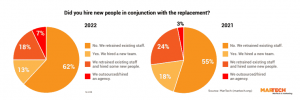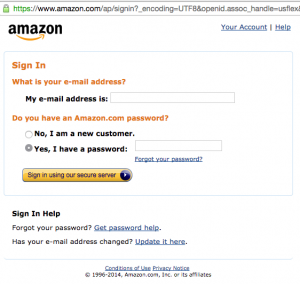 What if you could be a fly on the wall in a customer’s weekly strategy meeting as she talks through objectives and roadblocks with her team? Or imagine tagging along to happy hour with a group of your prospects and hearing them vent about their pain points and the ways your competitor’s product falls short.
What if you could be a fly on the wall in a customer’s weekly strategy meeting as she talks through objectives and roadblocks with her team? Or imagine tagging along to happy hour with a group of your prospects and hearing them vent about their pain points and the ways your competitor’s product falls short.
These types of insights would give you an intimate understanding of your market and empower you to speak their language. But instead of planning a covert operation inside your buyers’ walls, look to the social Web, where people are voluntarily and publicly sharing information that can help you get to know them and the problems they need to solve.
Basics of Buyer Personas
Getting to know your buyers is the first step in developing a successful marketing strategy. Marketers take research and buyer insights and distill them into buyer personas, complete with names and photos to make them feel real and relatable. Personas are amalgams of real buyers and the more detailed they are, the better. They can guide all marketing activities, messaging and content creation.
Effective personas include buyers’ demographics, experience, expertise, emotions, values, technology preferences and social and cultural context. Some of these details can be learned only by going directly to the source—your target buyers. And they’re already talking about a lot of this stuff on the social Web. The question is, are you listening?
What is Social Listening?
Social listening or monitoring refers to tracking social streams that follow mentions of your brand and keywords related to your offerings and industry. Active listening makes us better communicators; brands can’t have engaging conversations online if they just push their own messages and disregard what people are saying.
But social listening is also a valuable business intelligence tool. It’s a way to learn about your market’s needs firsthand and hear how they talk about you, your products, your competitors and themselves. Listening lets you tap into a sea of authentic, user-generated information and plug it back into your business so you can market and sell better. “Get as close as possible to what your audience is doing behaviorally and learn from it,” says Julie Fleischer of Kraft Heinz. “The Internet is a gigantic ethnography. It’s our job to pay attention.”
Social listening is not about crossing a line into being a creepy Big Brother or inserting yourself into conversations where you’re not wanted. Not everything you hear warrants a response, and people can be understandably freaked out if you respond to them when they weren’t talking to you. Focus first on learning about your market and how to better serve them. Later this will help you pick and choose your social media interactions so that you’re providing welcome assistance, not unwanted advances.
The volume of communications taking place on social platforms every day can be intimidating, but a listening initiative doesn’t have to be a huge time investment. Once you’ve set up your listening feeds, a single deep dive over a few hours can paint a more complete picture of your buyers than you had before and provide a rich resource of details to incorporate into personas. Continuing to review your streams over time will help you further hone personas to improve their utility, as well as identify opportunities for engagement.
How to Get Started
Some listening tools to explore
- HubSpot: Our partner HubSpot offers a suite of social tools, including Social Monitoring, which lets you listen to mentions of words, phrases and lists of people on Twitter. You can configure your streams to show up directly in your Social Inbox.
- HootSuite: The HootSuite platform offers native listening functionality in the HootSuite Pro dashboard and with the uberVu via HootSuite tool, and it integrates with third-party apps for additional insights.
- Radian6: If you’re on the Salesforce platform, check out Radian6, which integrates seamlessly with your CRM. Salesforce provides several social media marketing tools within Social Studio, including Radian6, which focuses on monitoring and is praised for its user-friendliness.
- Sysomos: If your company is global and multi-language monitoring is a priority, take a look at Sysomos, which can track social activity in more than 180 languages and monitors 25 platforms.
In your listening platform of choice, set up streams to follow industry thought leaders, existing customers, relevant keywords, your brand name, your competitors’ names, and anything else that could help paint a picture of your audience. As you review the streams and notice comments or conversations that seem to represent your target market or industry, pop into individual profiles to get a feel for what these potential buyers are like.
Document what you learn in a spreadsheet, and note characteristics that different buyers have in common. These are the representative details that can add color to individual personas while accurately conveying the persona group as a whole.
Questions to guide your initial listening efforts
- Which platforms and online communities are my audience most active in?
- What are people saying about my industry and product offerings?
- What problems are potential buyers venting about online that my product can help solve?
- What is the current sentiment toward my competitors’ offerings?
- Who are the thought leaders in my industry on the social Web?
Plugging What You Learn Back into Your Personas
Get more specific with demographics and interests
You probably already built age, gender and location information into your personas based on data from Facebook Insights or Twitter Analytics. Listening to the content and context of what your audience is saying can provide even greater detail. If you find similarities across your audience on job title, education level or alma mater, political leanings, favorite sports teams or family status, add these details to your personas to make them more informative.
Incorporate social media behaviors and preferred platforms
For each persona you create, list the character’s top social platforms. Add tidbits that reflect larger trends you glean from your research, like “checks Facebook upon waking every morning” or “spends an hour on Pinterest most Saturdays, pinning recipes and home design photos.” People’s behaviors on the social Web can indicate their behaviors within the buyer journey. If you dig into a bunch of target buyers’ social activity and see that many poll their networks before making purchase decisions, include this in personas to remind your team of these behaviors.
Pay attention to the content types your audience is sharing. James Prideaux recommends using Twitter lists or SocialBro to follow influencers or consumers and learn their content preferences so you can create inbound assets they want to consume.
Add quotes from real people for authenticity
As Ginny Redish points out in Letting Go of the Words, “Finding out the words your site visitors use to describe what they want and need is critical. Then you’ll have their vocabulary to use in your content.” Use real language and quotes from your target buyers in your personas to show the way they talk about your product, service or industry. This will help you speak to them with your content and messaging in a way they relate to. Added bonus: This can plug into your SEO efforts, too. As you learn the keywords your customers use, include them in your Web and social content to increase its likelihood of being found.
Enrich basic personas with stories and scenarios
Use more real-world details to take your personas to the next level by creating day-in-the-life stories or scenarios that explore how buyers might engage with your brand. These mock interactions can help you determine what content or tools your buyers might look for when they approach your business to solve a problem.
To learn more about the importance of personas in inbound marketing, download our new eBook, The New Demand Generation: Personas, Personalization & Programmatic Marketing.
Digital & Social Articles on Business 2 Community(78)
Report Post





